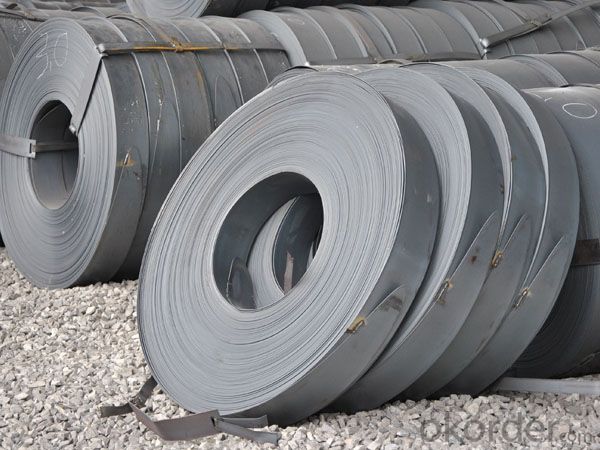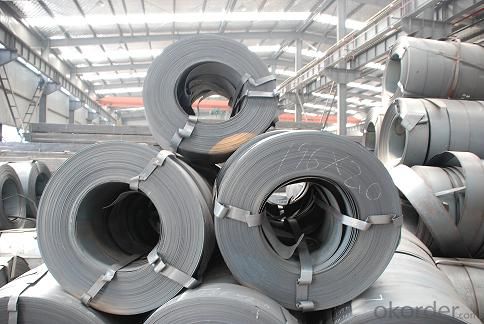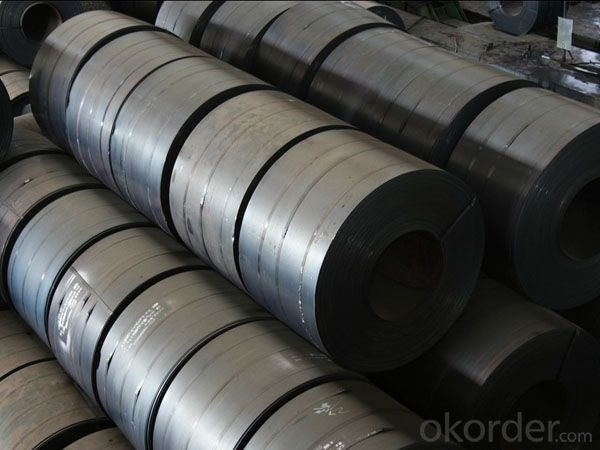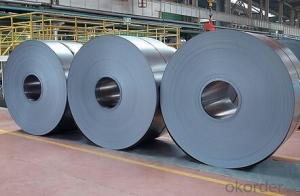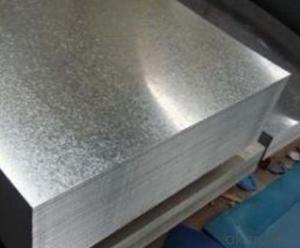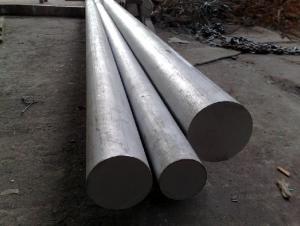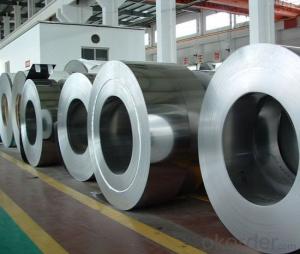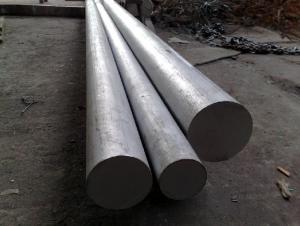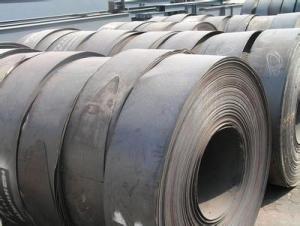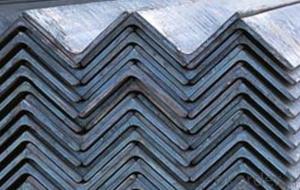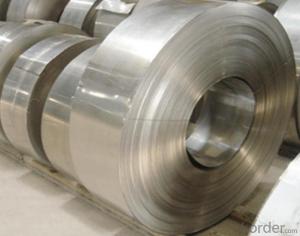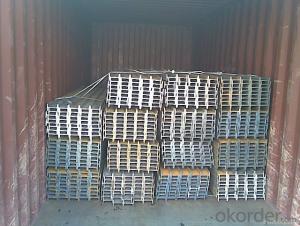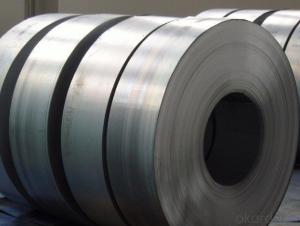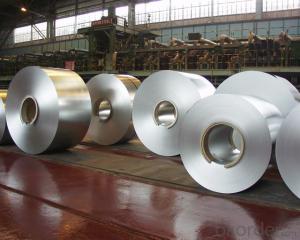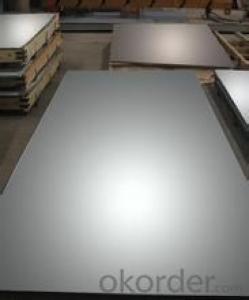High grade hot rolled narrow strip steel
- Loading Port:
- Tianjin
- Payment Terms:
- TT OR LC
- Min Order Qty:
- 300 m.t.
- Supply Capability:
- 5000 m.t./month
OKorder Service Pledge
OKorder Financial Service
You Might Also Like
Definition
Edit
Strip steel
The strip generally supplied in rolls, has the advantages of high size precision,good surface quality, easy processing, material saving etc.. With the same steel plate, strip by strip material is divided into ordinary and high quality strip steel two categories; according to the manufacturing method of hot rolled strip,cold rolled strip two.
2 scope of application
Edit
Steel is widely used in the production of welded steel pipe as blank, cold-formed steel, manufacturing bicycle frame, wheels, clamps, washer, spring film,saw blade, metal products and blade etc..
Cold-formed steel
In broadband steel
The 3 process
Edit
The production process of cold rolled strip steel is generally: picklinglubrication, rolling, process, anneal and flat, cutting, packaging.
Cold rolled strip steel pickling rolling process: -- -- -- -- the size of synchronousrolling annealing lubricating antirust oil length -- -- -- flat polished package
Hot strip rolling heating furnace dephosphorization machine: -- -- -- --phosphorus removal roughing mill machine finishing mill surface quality inspection instrument -- -- -- -- layer cold coiler bundling machine -- number spraying machine -- volume base slab
The production process of hot rolling strip steel: first in the heating furnace of increasing the temperature to the desired temperature of rolling, and then oxidized to tin machine generated on the slab roller into the roughingphosphorus removal treatment, then enter the width and thickness of striproughing rolling unit rolling, iron oxide by roller conveying to phosphorus on the strip surface finishing machine produce processing, enter the width and thickness of strip finishing rolling unit for more precision rolling, strip by rollerby layer on the surface temperature of cold roll strictly control take before and after, enters the coiler for steel coil finally bundling, spraying number into thevolume storage packaging.
4 Market
Edit
In May 20th Shengfang steel prices down. According to the data Chineseindustry insight network show: Hebei forward, Sheng Bao, Bazhou Xinya, the new crown made 2.5* (232-355) steel price is 3400 yuan (ton price, the same below), down 50 yuan more than last Friday.
Influenced by Tangshan last week, small narrow billet prices, Saturday (18 days) in Shengfang area with steel mills have lowered the ex factory price. The price decline, turnover performance in general, opened today manufacturersoffer temporary stability. In addition, the Tangshan area steel prices also have lowered, 355mm strip retail pricing million in 3320-3350, with the local price difference between 50-80 yuan, relatively reasonable.
Today Tangshan small narrow band market prices show small to rise, and the futures, electronic disk also rise, but the rise of strength are insufficient. At present, the overall trend of steel spot market downturn, but the steel market is restricted by the supply pressure, the market price is the emergence of the continuing rise in prices. And will soon enter the consumer off-season, terminaldemand release rate has slowed down, expected short-term local steel marketprice is still dominated by the shock consolidation.
5 Classification
Edit
Hot rolled strip
1, hot rolled ordinary carbon structural steel (GB3524-83)
Strip steel
Hot rolled plain carbon steel with ordinary carbon structural steel as material,made of 1.80-6.00mm hot rolled strip thickness, width of 50-1200mm.
(1) the main purposes
Mainly used for cold rolling billet, cold-formed steel billet, welded steel pipebillet and bicycle, hardware products manufacturing.
(2) grade and chemical composition of materials
Standards and grades
National standard
Quite foreign standard
Function and use
Material categories
The implementation of standards
Grade
Standard No.
Grade
Suitable for manufacturing of cold forming parts
Low carbon steel coil
Q/BQB302
SPHC
JISG3131
SPHC
SPHD
SPHD
SPHE
SPHE
SAE1006/SAE1008
SAE1006/SAE1008
XG180IF/200IF
XG180IF/200IF
Steel for general structure
GB/T912-1989
Q195
JISG3101
SS330
For general construction of buildings, bridges, ships, vehicles, etc.
Q235B
SS400
SS400
SS490
ASTMA36
SS540
(3) the mechanical properties
The nominal thickness
The yield strength (Mpa)
Tensile strength (Mpa)
Elongation of A50mm%
The 180 degree bend test
>1.5-2.5
Less than or equal to 290
More than 310
More than 38
D=0a
>2.5-3.0
Less than or equal to 290
More than 300
More than 38
D=0a
>3.0-4.0
Less than or equal to 290
More than 300
More than 40
D=1/2a
Use of hot-rolled steel 2, bicycle (GB3645-89)
Bicycle for hot rolled wide strip steel in carbon steel and low alloy steel asmaterial, made of 1.8-8.0mm strip steel thickness after hot rolling, the strip width can reach 1300mm.
(1) the main uses special for bicycle manufacturing materials.
(2) grade and chemical composition of materials
(3) the mechanical properties
(4) strip (board) size
The thickness of the steel plate strip thickness 1.8-6.0mm, 7, 8.0mm.
Strip (board) width: rimming steel is less than or equal to 1300mm (a=2.0-6.0)
Killed steel is less than or equal to 1250mm (a = 3)
Less than or equal to 1300mm (a = 3)
The length of the plate, steel coil diameter 760mm, 4-6m plate.
Hot rolled strip with 3, bicycle (GB3647-89)
(1) the main purposes
Bicycle designed for the manufacture of hot rolled strip of bicycle and the chain, also can be used for cold rolled and welded pipe blank blank.
(2) grade and chemical composition of materials
(3) the mechanical properties
(4) the specification of strip
Bicycles are generally used for hot rolled strip steel strip thickness of 1.8-8.0mm, width of 60-250mm.
Hot rolled strip with 4, pressure vessel (GB5681-85)
(1) the main purposes
Used in the manufacture of low pressure vessel.
(2) grade and chemical composition of materials
(3) the mechanical properties
(4) the specification of strip and production unit
Pressure vessel is generally used for hot rolled strip steel strip thickness of 4mm, width of 80mm double length, length of not less than 70m (volume).
Cold rolling of strip
(1) the main purposes
Cold-rolled carbon steel for the manufacture of bicycles, sewing machines,agricultural machinery and other accessories and hardware products.
(2) grade and chemical composition of materials
Grade
Supply standard
Supply size
Use
SPCC
Q195
Q235-B
GB/T912
GB/T3274
Width
Mm
Thickness
Mm
Widely used in engineering machinery, transportation machinery, construction machinery, hoisting machinery。
- Q: How do steel strips contribute to dimensional stability in various applications?
- Steel strips contribute to dimensional stability in various applications due to their inherent properties such as high tensile strength, rigidity, and resistance to warping or bending. These properties ensure that steel strips maintain their shape and dimensions even under extreme conditions, preventing any significant dimensional changes. As a result, they provide stability and precision in a wide range of applications, including construction, automotive manufacturing, electrical appliances, and packaging industries.
- Q: How are steel strips used in the production of electrical components?
- Due to their exceptional properties and versatility, steel strips are commonly employed in the manufacturing of electrical components. These strips, typically crafted from high-quality steel alloys, possess qualities such as strength, durability, and resistance to corrosion. One of the main applications of steel strips in electrical component production is the creation of transformer cores. As essential components in electrical power systems, transformers facilitate the transfer of electrical energy between varying voltage levels. Laminated cores, made using steel strips, are crucial in minimizing energy losses and enhancing overall transformer efficiency. Through precise cutting, stacking, and insulation, these strips form a low-reluctance pathway for magnetic flux. Furthermore, steel strips also find utility in the assembly of electrical motors and generators. To reduce energy losses caused by eddy currents, these components require laminations composed of steel strips. By utilizing laminated cores, the generation and control of the magnetic field are efficiently accomplished, resulting in improved performance and energy efficiency. Additionally, steel strips are utilized in the production of electrical connectors, terminals, and contacts. These components necessitate high conductivity and exceptional mechanical strength to ensure reliable electrical connections. Steel strips can be shaped or formed into a variety of configurations for the creation of these components, guaranteeing secure and long-lasting electrical connections. In conclusion, steel strips are of utmost importance in the manufacture of electrical components due to their contribution of strength, durability, and excellent magnetic properties. Whether employed in transformer cores, motor laminations, or electrical connectors, these versatile materials play a vital role in enhancing the efficiency and reliability of electrical systems.
- Q: What is the impact resistance of steel strips?
- The impact resistance of steel strips is generally high due to their strength and durability. Steel strips can withstand significant force and are less likely to deform or break upon impact, making them suitable for various applications where impact resistance is essential, such as construction, automotive, and manufacturing industries.
- Q: What are the specifications for steel strips used in the production of air conditioning components?
- The specifications for steel strips used in the production of air conditioning components typically include factors such as the thickness, width, and coating type. These steel strips are generally required to have a specific thickness range, typically between 0.2 to 2.0 millimeters, to ensure strength and durability. The width of the strips can vary depending on the specific component being produced, but commonly ranges from 20 to 200 millimeters. Additionally, the steel strips may need to have a specific coating type, such as zinc or aluminum, to provide corrosion resistance and enhance performance in the air conditioning system.
- Q: What are the cutting options available for steel strips?
- There are several cutting options available for steel strips, depending on the specific requirements and desired outcome. 1. Shearing: Shearing is a common method used to cut steel strips. It involves using a shearing machine with two blades to slice through the material. This method is ideal for straight cuts and can be used for both thin and thick steel strips. 2. Laser cutting: Laser cutting is a precise and efficient cutting method that uses a laser beam to melt and vaporize the steel strip. This technique is perfect for intricate and complex designs, as it provides high accuracy and a clean cut. However, it may not be suitable for very thick steel strips. 3. Waterjet cutting: Waterjet cutting utilizes a high-pressure stream of water mixed with an abrasive material to cut through the steel strip. This method is versatile and can handle various thicknesses of steel. It is also ideal for cutting heat-sensitive materials or those with a high melting point. 4. Plasma cutting: Plasma cutting involves ionizing gas and an electric arc to cut through the steel strip. This process is effective for both ferrous and non-ferrous metals and can handle different thicknesses. Plasma cutting is known for its speed and ability to cut through thicker materials. 5. Saw cutting: Saw cutting uses a circular saw blade or bandsaw to cut through the steel strip. It is suitable for straight cuts and is commonly used for thicker steel strips or when precise shapes are not required. When choosing a cutting method for steel strips, it is important to consider factors such as the desired precision, speed, complexity of the design, and the thickness of the material. Each cutting option has its advantages and limitations, so it is crucial to select the most appropriate method based on the specific needs of the project.
- Q: What are the different rolling processes for steel strips?
- There exist various rolling processes that can be employed for steel strips, each possessing its own distinct characteristics and advantages. Some of the most prevalent rolling processes for steel strips encompass: 1. Hot rolling: By subjecting the steel to elevated temperatures and subsequently passing it through a succession of rollers, its thickness is reduced. Hot rolling is commonly adopted to manufacture large quantities of steel strips with consistent thickness and a smooth surface finish. It finds extensive application in the production of structural components, like beams and plates. 2. Cold rolling: Unlike hot rolling, cold rolling involves passing the steel through rollers at room temperature. This process is employed to produce steel strips with enhanced dimensional accuracy and a superior surface finish. Cold rolling is frequently utilized to manufacture steel strips that necessitate tight tolerances, as seen in the automotive and appliance industries. 3. Skin pass rolling: A type of cold rolling, this process enhances the surface finish and flatness of steel strips. It entails passing the steel through rollers with a minute gap between them, exerting controlled pressure. Skin pass rolling minimizes thickness variations and enhances the surface quality of the steel strips. 4. Tandem rolling: This continuous rolling process entails passing the steel strip through a series of rolling stands in a single operation. Tandem rolling is commonly employed to produce steel strips with diverse thicknesses and widths. It offers high productivity and efficiency, rendering it suitable for large-scale production. 5. Reversing rolling: In this process, the steel strip is passed through a rolling mill in both forward and backward directions to achieve the desired thickness reduction. Reversing rolling is frequently utilized to produce steel strips with significant thickness reduction and a uniform thickness distribution. These examples merely provide a glimpse into the array of rolling processes available for steel strips. The selection of a specific process hinges upon factors such as the desired properties of the steel strips, production requirements, and cost-effectiveness of the process.
- Q: How are steel strips manufactured?
- Steel strips are manufactured through a process called hot rolling, in which a large steel slab is heated and passed through a series of rolling mills to reduce its thickness and shape it into a strip. The strip is then cooled and further processed to achieve the desired properties and dimensions.
- Q: How are steel strips cut to the desired length?
- Steel strips can be cut to the desired length using various methods, depending on the specific requirements and the equipment available. One common method is using a shearing process, where a shearing machine is used to cut the steel strip into the desired length. This machine consists of two blades, one stationary and the other moving, which are used to apply a shearing force to the strip, resulting in a clean and precise cut. Another method is using a slitting process, which involves passing the steel strip through a set of circular blades. These blades are spaced at a specific distance, which determines the width of the strips being produced. As the strip passes through the blades, it is cut into multiple narrower strips, which can then be further processed or used as is. In some cases, laser cutting technology can be employed to cut steel strips to the desired length. This method utilizes a high-powered laser beam to heat and melt the steel, allowing for precise and accurate cuts. Laser cutting offers the advantage of being able to cut complex shapes and patterns, making it suitable for intricate cutting requirements. Regardless of the method used, it is crucial to ensure that the steel strip is securely held during the cutting process to maintain accuracy and prevent any unwanted movement. Additionally, proper safety measures should be followed to protect workers and equipment during the cutting operation.
- Q: What are the characteristics of cold rolled strip technology?
- Cold rolled blank because the surface covered with oxide film and a small amount of impurities, will directly affect the precision of rolling and the quality of the product, so the blank material must first sent to the shallow groove company push-pull continuous pickling, pickling of oxide film and annealing to remove impurities, can be sent to the high precision six roller reversible rolling mill made the required thickness. After rolling through forced circulation cover type bright annealing furnace and high precision leveling unit two Kun to soften and smooth surface, and then finished packing or according to customer demand straight points, finally packaging factory.
- Q: What are the mechanical properties of steel strips?
- The mechanical properties of steel strips include high tensile strength, excellent ductility, good toughness, and high resistance to corrosion and wear.
Send your message to us
High grade hot rolled narrow strip steel
- Loading Port:
- Tianjin
- Payment Terms:
- TT OR LC
- Min Order Qty:
- 300 m.t.
- Supply Capability:
- 5000 m.t./month
OKorder Service Pledge
OKorder Financial Service
Similar products
Hot products
Hot Searches
Related keywords



